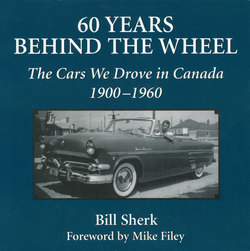Читать книгу 60 Years Behind the Wheel - Bill Sherk - Страница 35
На сайте Литреса книга снята с продажи.
ОглавлениеCanadians Celebrate Armistice Day, 1918
THIS TRUCK WITH SOLID RUBBER tires rolled through Toronto as people celebrated the end of the Great War (as it was called until the outbreak of the Second World War). The conflict officially ended at the eleventh hour of the eleventh day of the eleventh month of 1918. Canadians now turned their attention to a future that held the promise of peace and prosperity.
Following a brief post-war depression, automobile production skyrocketed during the 1920s on a wave of prosperity unimagined by previous generations. By 1929, nearly everyone in Canada who wanted a car could buy one, even if it meant shelling out a dollar or two for an old jalopy that still ran.
In 1919, 90 percent of all cars produced in North America were open cars with a folding top and side curtains. By 1929, 90 percent of all new cars built in North America were closed cars. Motorists were demanding — and getting — cars that protected them and their families from the weather. This protection was especially important in Canada, where long, cold winters forced many motorists to put their cars up on blocks until the spring.
By the mid-1920s, motoring had become a national pastime, whether it was a Sunday afternoon drive or a motor trip of several hundred miles. Good paved roads and “filling stations” (as they were called back then) catered to the motorists’ growing demand for more roads, better roads, wider roads — and more powerful cars to reach their destination in half the time.
